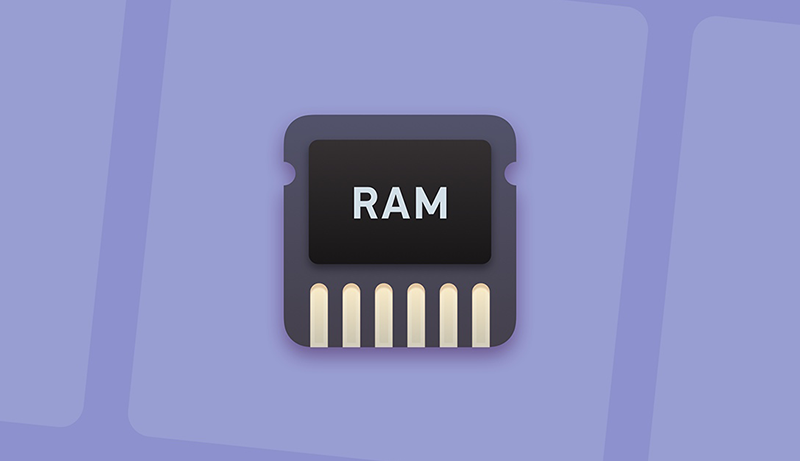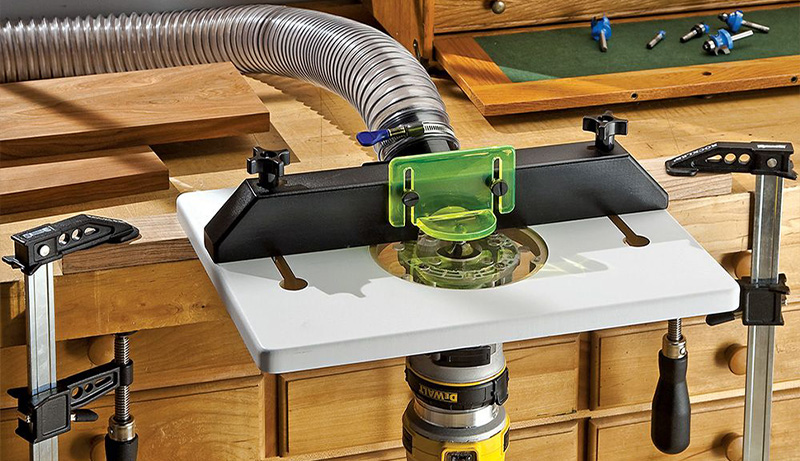There was a time when Macs came with 4 GB of Memory. But, modern MacBooks have greater memory; you can purchase up to 64GB. Yet even they could grow slower with time. High Memory use is one of the factors that might be to blame for the problem.
This post will define RAM, show you how to monitor RAM utilization, and—most importantly—discuss 10 simple techniques to lower Mac memory usage. Move along!
Describe RAM
Random access memory is referred to as RAM. It serves as the storage location for all currently utilized programs, data, and operating system components. This area is transient, so it alters according to the apps you use. It is important that you have adequate Memory to launch and use all of the programs you require.
Enter “Activity Monitor” in the search box under Apps. This should launch an awesome, vintage Activity Monitor and display how much free RAM you still have.
Using Command-Space and the word “Activity Monitor” in the search field will quickly open Activity Monitor.
You can see in the screenshot I’ve provided from my Mac that my RAM consumption is practically at its maximum. The conclusion is as follows:
In-app memory – applications and processes take
Wired memory – reserved wired memory that cannot be released.
Compressed inactive – used by other applications
Swap Used – Memory that can really be utilized by macOS Cached Files
Under Memory Pressure, take note of the colored graph. Your Mac is actually panting for new RAM if your chart is entirely red and yellow. Contrary to popular belief, your Mac’s memory capacity is actually not all that crucial. In actuality, a system is designed to utilize all available memory resources. Instead, make it a practice of periodically viewing the Memory Pressure graph in the Activity Monitor since it is far more illuminating.
How to check CPU usage on Mac
Use the CPU tab in Activity Monitor to manage processes that use a lot of CPU. An program typically uses 0–4% of the CPU. Go within that specific item in the list and click the Stop button if it takes an unreasonably long time.
How to free up memory on Mac

1. Reduce Mac RAM use by removing login items
Programs called Login Items run when a Mac starts up. It’s bad that some of them discreetly add their names to the list. These are the first items to be deleted if you want to free up Memory. Don’t worry, you’re not actually removing the program; you’re just stopping it from opening automatically each time.
So, in order to delete Login Items and simultaneously decrease the memory use of your Mac, you must:
- Go to General in System Settings.
- Find Open at Login.
- Click apps you don’t wish to load as your Mac begins.
- Click the minus symbol (-) here.
2. Free up disk space if Mac is low on memory
Virtual memory is equal to the space on your Mac’s disk that is available. You need this if your physical RAM is exhausted. Your computer now depends on the amount of hard disk space you have to keep your software running.
You should preserve at least 20% of your disk space on your starting drive, according to the traditional geek rule of thumb. This might potentially lower your future iCloud storage costs while also keeping your Mac faster.
Something should be deleted to make space:
- movies and other large unneeded files
- dated downloads
- uncommon applications
- System sludge
Go to the Apple menu, System Settings > General, and then click the Free Space button to view your available space. Click Storage here.
There are a few utilities integrated into your Mac for controlling disk space. To access them and occasionally erase unnecessary items, look under the Storage bar.
3. Free up RAM on Mac with CleanMyMac X
If you select a specialized program to perform the operation for you, freeing up memory can be a one-click process. An Apple-notarized Mac cleaner called CleanMyMac X aids in Mac optimization, decluttering, and security. It contains a helpful Maintenance module that may address many memory problems with your computer. When you next get the notification “Your system has run out of application memory,” give it a try.
- Go to the Maintenance page after downloading it for free.
- Click RAM Free.
- Press Run.
4. Purge your desktop.
This advice is unfairly always placed towards the end of instructions, so it works rather well. I would presume that your Desktop is packed with mountains of icons without even taking a peek at it. The problem is that every Desktop icon in your macOS is seen as a little active window because of how it was created. The more icons, the more memory the Mac uses. It is thus advised to keep your desktop tidy in order to free up memory resources.
Control-click your desktop and choose Employ Stacks to tidy up the mess. Using this tool, you may easily remove items in bulk while also organizing your files.
5. Clear cache files
Clearing the cache on a Mac is another method for releasing memory. Although clearing the cache on a regular basis won’t save you terabytes of space, it will make your Mac function more quickly and help you prevent system problems.
Hence, in order to delete cache files from your Mac, you must:
- Launch Finder.
- Choose Go to Folder from the Go menu.
- In the field, enter /Library/Caches then hit Return.
- You can view all of your cache files in the pop-up that pops up.
- To select all files or to remove them one at a time, use Command-A.
- To confirm, enter your username and password.
It’s possible that you have windows open on your Mac if you empty the folder and still discover some files within. You may immediately free up some space on your Computer. Afterward, remember to empty the trash.
6. Adjust the Task Manager in Chrome.
The performance of your Mac may be impacted by Google Chrome, despite the fact that it is not to fault for excessive memory utilization. If Chrome is your default browser, there are definitely a lot of windows open there. In order to provide you with a quick browsing experience, Chrome launches a number of processes. Hence, it stores your tabs, plug-ins, and extensions in RAM. Have a look at Activity Monitor to see how many entries Google Chrome has:
The issue of “Why does Chrome utilize so much RAM?” then emerges. The problem is that each process is in charge of a different browser extension or plug-in. For instance, you must reload the tab when it collapses suddenly in order to continue working there. You would have to restart the entire browser if all tabs and extensions were controlled by a single process. Do you have any idea how frequently you would do that? The correct response as to why Chrome takes so much Memory is that.
I’ve used Chrome for a while, and only later did I realize that it has a task manager of its own. It can be used to compel the browser’s memory-intensive processes to shut down. It’s a useful tool since it enables you to check how much a page uses the CPU on a Mac.
- Access Chrome’s settings (dotted icon in the top right corner).
- Click Task Manager under Additional Tools.
The GPU process should be closed to release even more Memory. Although it might theoretically speed up pages, the GPU Process uses up a lot of RAM. To release RAM on your Mac, click End Process next to it.
7. Use the CleanMyMac X option to control RAM utilization.
Another practical and easy feature of CleanMyMac X for controlling your Mac’s speed and memory utilization. The symbol for CleanMyMac X will show up in your menu bar as soon as you install it and launch it for the first time. To access the CleanMyMac X menu, click the icon.
Use the CleanMyMac X menu if you see that your Mac is underperforming to examine how much RAM is available and clear it as well. Here’s how to uninstall memory-intensive applications:
- On your menu bar, select CleanMyMac X Menu.
- Toggle Memory.
- Your memory monitor will be shown. Each app listed under Top Consumers should have a Stop button next to it.
8. Exit all Finder tabs
Let’s assume that you are still wondering how to clear the Memory on a MacBook Pro or MacBook Air. The following technique is both time-saving and amazing, as you’ll see for yourself. Each window in the Finder uses RAM, which is no mystery. But how many windows are actually open? On your screen, some of them are piled or compressed in blind spots. All of your windows are combined into one with this Finder operation. View the steps here:
To merge all windows, select Finder > Window.
You can now efficiently manage Finder windows and free considerable space on your MacBook.
9. Limit the number of open tabs in your browser.
No matter what browser you use, it may be a memory hog. Chrome is typically held responsible for high Memory utilization. The reality is that any browser may use up memory, particularly if you have a lot of tabs open at once. Hence, another piece of advice is to run your browser with fewer tabs open. If you need to access them later, you may either shut the unneeded windows or add the relevant ones to your reading list or bookmarks.
10. To free up Memory, restart your Computer more frequently.
Freeing up RAM is only one of the many problems that may be resolved with a simple restart of your Mac. In essence, it purges Memory and deletes all temporary files. Making a habit of restarting your Mac every few days is a smart idea.
That was my opinion on how to make using your Mac a little faster. Check out these easy methods to speed up your Mac for more advice.
Frequently Asked Questions
How can I check my Mac’s program memory?
Go to Activity Monitor (Applications > Utilities) on your Mac to view the RAM consumption. You can view all the processes that are currently utilizing Memory on your Mac in the Memory tab. The Memory Usage graph, which shows how much application memory is being utilized, is located at the bottom of the window.
How can I tell if my Mac needs extra RAM?
Even while your Mac may be utilizing practically all of its Memory, if it’s doing it effectively, you don’t need more. Go to the Memory tab in Activity Monitor after opening it. The Memory Pressure graph displays the current state of your RAM: yellow indicates that an application or process is utilizing too much application memory, while green indicates that your Mac is effectively utilizing RAM. Your Mac requires additional RAM, as shown by the red memory pressure.
How can your MacBook’s RAM be rapidly made available?
Find out which software is using the most memory on your Mac in order to free up RAM. Activity Monitor’s Memory tab contains a list of memory-intensive programs. Click the “X” to end an app if it’s open and you’re not using it right now. In turn, this will release some program memory.
Final Words
In conclusion, if you want to free up RAM on your Mac and improve its performance, there are several steps you can take. Start by identifying memory-hogging apps and closing them when you’re not using them. You can also disable startup apps and clear cache files to reduce memory usage. Additionally, upgrading your RAM can provide a long-term solution to improve your Mac’s performance. By following these simple tips, you can make sure your Mac runs smoothly and efficiently.






Leave a Reply